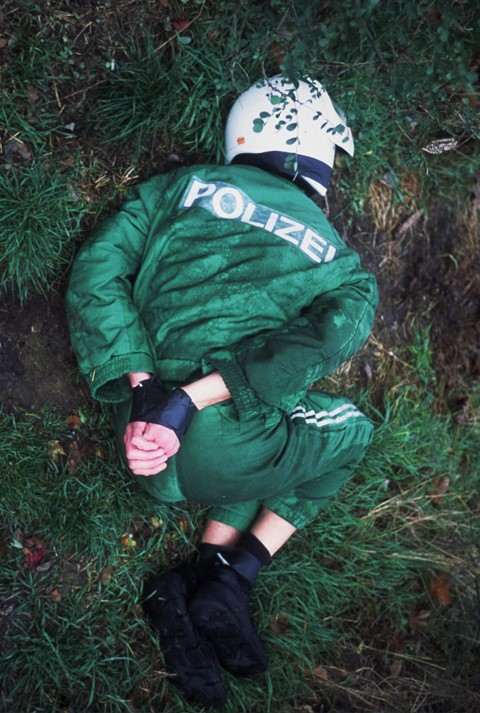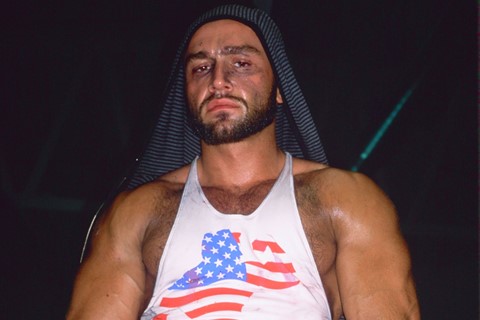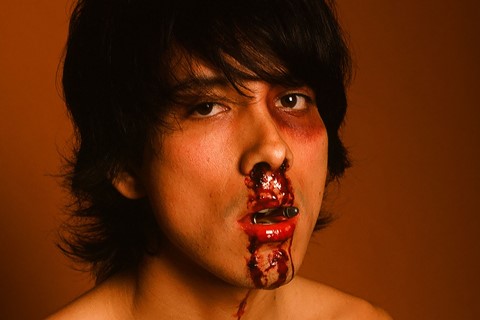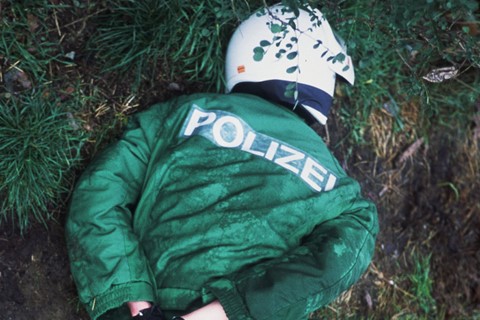“The moments of our
life are not expendable,
and the [possible]
circumstances of death
are beyond imagination.
If you do not achieve
an undaunted confident
security now, what
point is there in you
being alive, O living
creature?”
– Padmasambhava, The Tibetan Book of the Dead
Homo sapiens first walked the Earth about 50,000 years ago. Since then, more than 108 billion members of our species have been born, according to estimates by the Population Reference Bureau. Given the current global population of about 7.8 billion, those of us currently alive represent about seven per cent of the total number of humans who have ever lived. That means those of us who are still undead are vastly outnumbered by the dead ones.
As I was contemplating these numbers, I learnt of the sudden and tragic death of my close friend and muse. Yet I look at my pictures of him and he comes alive, preserved not only in my memory but in time – just like several other friends I captured who lived too fast and died too young. Photography has the power to transcend time and even death; it’s as much a document as an attempt to conquer our mortality and preserve our physical appearance in its prime.
In The Picture of Dorian Gray (1890), Oscar Wilde describes in detail the modern-day anxiety associated with the very human process of aging and fear of death. Yet in many cultures and civilisations death has been celebrated, re-enacted in elaborate rituals and presented in everyday life. In the Digital Age, most of us mortals rely on selfies to present our best selves to the outside world. More than ever before, photography has become the main vehicle for our self-image and self-esteem.
I believe that true art comes from the inner existential crisis that can be addressed but can never be solved. While studying the pictures in Bruce LaBruce’s Death Book, despite all their shock value, I immediately sense the artist’s urge to raise fundamental questions about human nature, sexuality, mortality, and the function of art in the late capitalist society. Capitalism has turned death, violence, destruction, and perpetual war into the most profitable business model the world has ever seen, on a mass scale never imaged before the industrial revolution.
LaBruce’s post-apocalyptic vision of the modern world is very much in tune with his aesthetic ancestors: Jean Genet who worshipped and glorified sexual outlaws and social outcasts; Georges Bataille who compared orgasm to death and has written extensively about this connection in his book Erotism: Death and Sensuality (1957); and Pasolini who shortly before his brutal murder by an underage hustler condemned the Western model of sexuality: “The sexual freedom of today for most people is really only a convention, an obligation, a social duty, a social anxiety, a necessary feature of the consumer’s way of life” (Corriere della Sera, 1975).
In his often gory and violent sets, LaBruce examines and confronts these sexual and social anxieties. He finds comfort in chaos and beauty in the most transgressive situations where fear no longer exists and morality doesn’t apply. In LaBruce’s parallel universe death is performed as a spectacle, a welcoming transition from the terror of our mundane mortal existence to a higher state where all our individual desires and sufferings are rendered useless. Death becomes him, as a guiding light in the underworld of the undead.
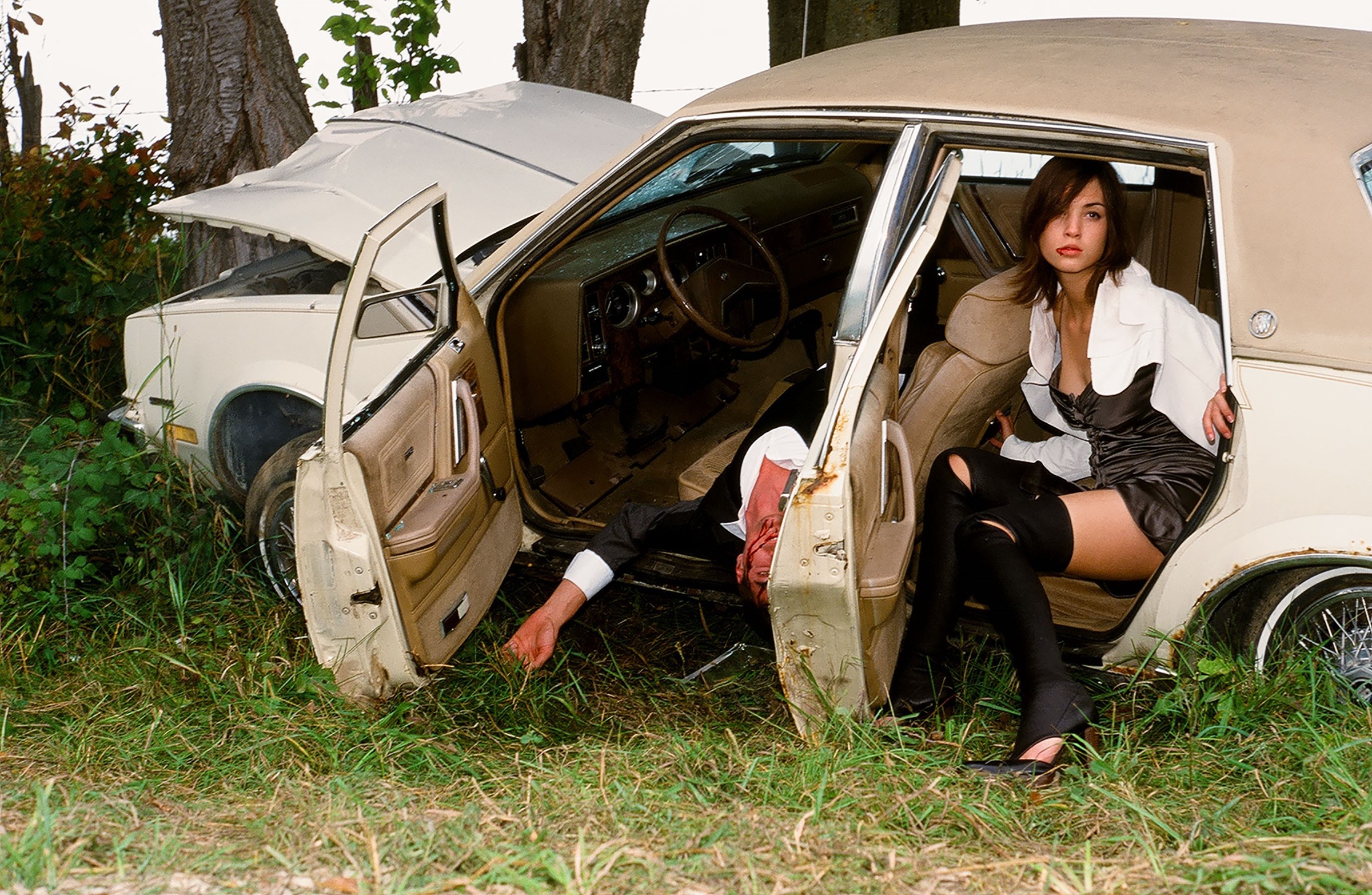
Slava Mogutin: You work crosses different mediums and disciplines, from cinema, theatre and performance to journalism and photography. Your pictures blend all those creative endeavours into one explosive cocktail. Have you ever studied photography and when did you take your first conscious photograph?
Bruce LaBruce: When I went to York University in Toronto in the 80s, I majored in Film with a minor in Dance. I got a late start as a dancer, not taking classes until I was 17, but I did consider becoming a choreographer. I did subsequently incorporate dance in several of my movies and theatrical pieces, and it has even come in handy for the live performances I “choreograph” at my gallery openings. As a Film major, the first year of undergrad studies included a still photography class, working with 35mm cameras. We had to develop our own negatives and do the developing and blow-ups. I suppose the first “conscious” photos I took were a series of black and white photos of my elder sister for a school assignment. Second year we worked in Super 8, making short films, which was fortuitous because it’s such a generous medium, technically simple and aesthetically satisfying. I was encouraged to continue in film production, but in the third year the medium was 16mm film, which involved a more complicated camera and lighting set-ups, and you were expected to finance half the films yourself. As I was a technophobic fairy and dead broke, I segued into Film Theory and got my undergrad degree. I had always intended from a young age to be a film critic and academic anyway, so I ended up getting a Masters in Film and Social and Political Thought. But during those years I started hanging out in the punk and underground art scenes in downtown Toronto where I met people working in Super 8, so I took that back up and started making short experimental art/porn films, and, eventually, feature films. The Reluctant Filmmaker!
SM: How did the idea of Death Book come about and what’s the concept behind it?
BlaB: Matthew Holroyd, the founder of Baron Books, approached me to collaborate on the Death Book, the second in a series of books about the relationship of photography to death and how death is portrayed in Western culture. (He did the first one in collaboration with the photographer Edith Bergfors.) As my work often deals in stark and extreme images of violence, gore, splatter and death in all its manifestations, I immediately thought it was a perfect fit for me.
SM: Can you recall your first encounter with death?
BlaB: As a sensitive (read: gay) child growing up on a small farm, and having a father who was also a hunter and trapper, I witnessed a lot of carnage that had a profound effect on me – animals being shot with rifles and shotguns and killed or torn apart in fights with hounds, animals in traps chewing off their own legs to escape, mass chicken decapitations, livestock being branded and castrated with large shears, their genitals painfully cauterised, kittens drowned or asphyxiated, et cetera. When I was five or six my best friend had his first two fingers amputated in a hay auger. Although I rarely participated directly in the bloody carnage, in the summer one chore my brother and I had was to turn over wet bales of hay one by one and stomp the field mice to death with our boots by the hundreds, their guts squirting out of them. Later I referred to them as the chicken and mouse holocausts. Death was abstract to me then; now I can’t kill an insect without guilt. There was once a bad accident right in front of our farm in which a man was killed. When I ran to the scene of the accident, he was lying on his back in the middle of the road, both his socks and shoes knocked off by the impact, his breathing laboured before he took his last breath. It’s a scene that I recreated at the beginning of my movie L.A. Zombie. (Production stills from the scene are included in the Death Book.) In my version, however, the victim is fucked back to life by an alien zombie that rubs his strange penis directly up against his heart. Zombies, porn and gore figure prominently in my work, but it is as much about memory as it is about metaphor.
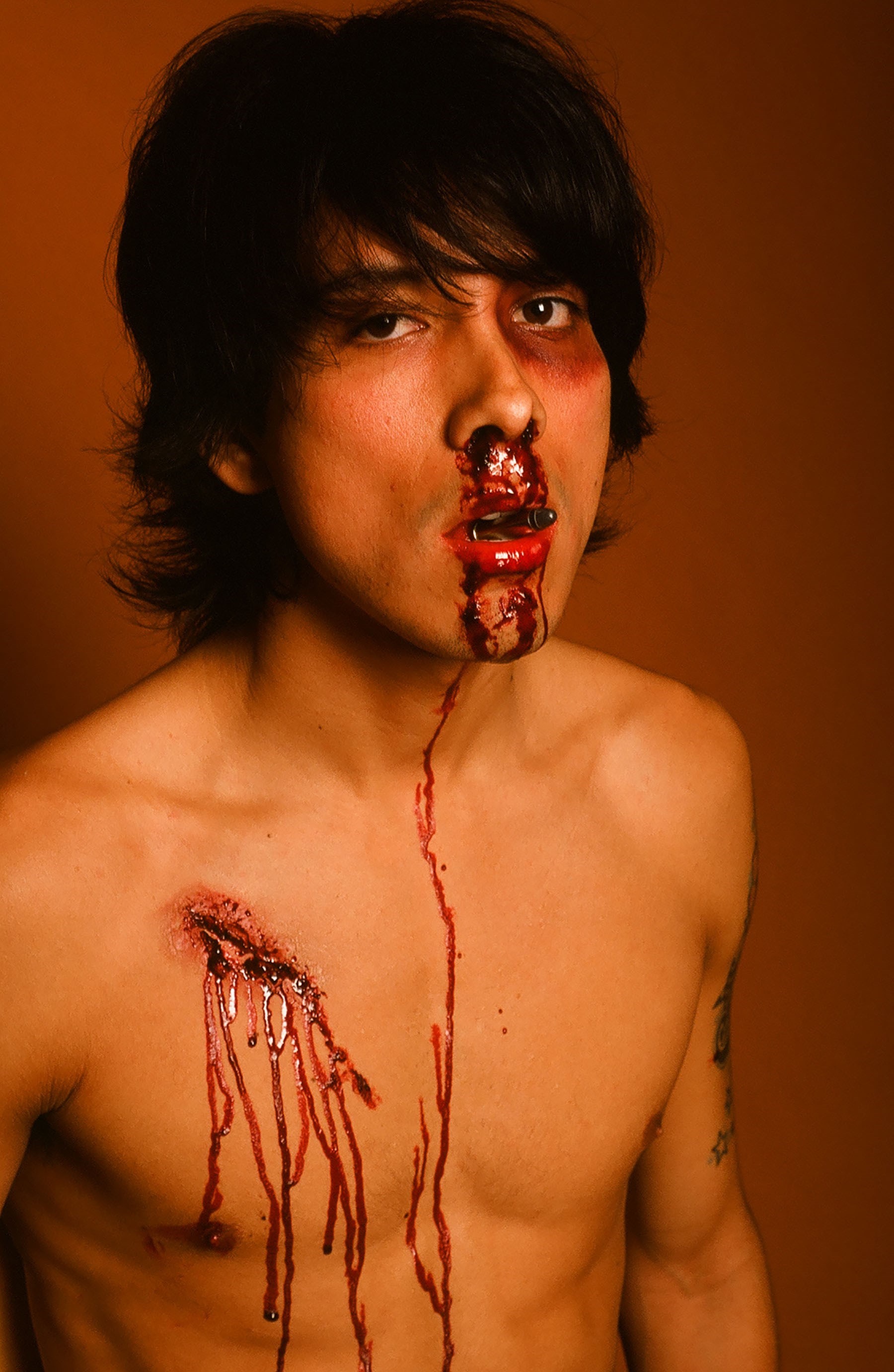
SM: The book covers three decades of your photography, and the vast majority of these pictures aren’t suitable for most publications and social media outlets. Can you talk about your most painful and memorable experiences with censorship?
BlaB: Like much of my work, this book is suitable for no one, lol. I have been routinely censored from the very beginning. In Toronto in the 90s, the labs where I had my photographs and films processed would call the cops when they saw the sexually violent images. I usually managed to talk them into returning the negs (or diapositives) to me. My work was routinely stopped at the Canadian border, and I would receive notifications with boxes checked to indicate obscenity, pornography, sex with violence, and even sedition. My movies all had to be censored in Britain in order for them to be distributed. Hustler White was banned in British Columbia; L.A. Zombie was infamously banned in Australia. It’s something that I had to become philosophical about, and even learn to wear as a badge of honour.
SM: We both used to shoot for porn mags such as Honcho, Mandate, Playguy and Inches. I was very inspired by your commercial porn because it was pushing the boundaries of the genre in a very radical aesthetic and political direction. I remember how the editor of those mags always complained that your shoots were too hardcore even for them. Where does your fascination with porn come from?
BlaB: I also witnessed a lot of breeding and fucking on the cruel farm! My father had both a bore and a bull, these enormous rogue animals bred for breeding, always aggressively fucking their female harem. I guess that was my first experience with porn! It was the 70s so in a rough rural environment I always had to keep my homosexuality, which I was aware of from a very young age, hidden. I was an adorable, sickly ginger sissy with orange ringlets, a bit Little Lord Fauntleroy, and always preferred the company of girls to boys. I also read my older brother’s copies of Henry Miller and William S. Burroughs furtively as a kid. I didn’t lose my virginity until I was 22 or 23 in the 80s, but when I did, it was the Walls of Jericho coming down, the proverbial velvet rage, and I would get fucked by a score of guys at gay saunas in one night like it was the last days of Caligula.
This was during the height of the Aids epidemic, so even though I tried to practise safe sex, there was always an element of anxiety and terror, like a beast stalking you in a horror film. By the time I started making my first short experimental films, I was a punk provocateur, but as a reaction against the homophobia in the punk and skinhead scenes, I started incorporating found gay porn in my movies and subsequently making my own naive queer porn, which I starred in myself. I considered it as much a political gesture, in terms of gay liberation and radicalism, as something pleasurable and erotic.
SM: There’s plenty of gore and violence in your work. Your blood splatter performances, which I had the pleasure of participating in on numerous occasions, are the continuation of the avant-garde tradition of the Viennese Actionists such as Hermann Nitsch blended with the classic Italian gore of Dario Argento. Who else influenced your bloody vision?
BlaB: The two examples you’ve mentioned were definitely an influence. My bloody gallery openings and installations at art events, for which I often recreate scenes of terrorist abduction and torture and crime scenes, sometimes incorporating zombies, sometimes not, taking photos and Polaroids of the bloodbaths, is partly an influence of the Viennese Actionists, and partly inspired by the terrorist abduction videos and beheadings that you would see routinely on television and the internet, practically packaged as entertainment. I am also a big fan of gore and splatter films, which are often about sexual anxiety and homosexual panic, especially the first wave of B-movies in the late 60s and through the 70s by the likes of Dario Argento, Romero, Craven, Raimi, Carpenter, and Cohen and Cronenberg, that were partly a reaction to the horrors of the Vietnam War and the death throes of the sexual revolution. But the atmosphere at these events, as you can attest to, is never negative or cynical. Rather, there is an atmosphere of carnival, catharsis and healing, a giddy sense of transgression and fun.
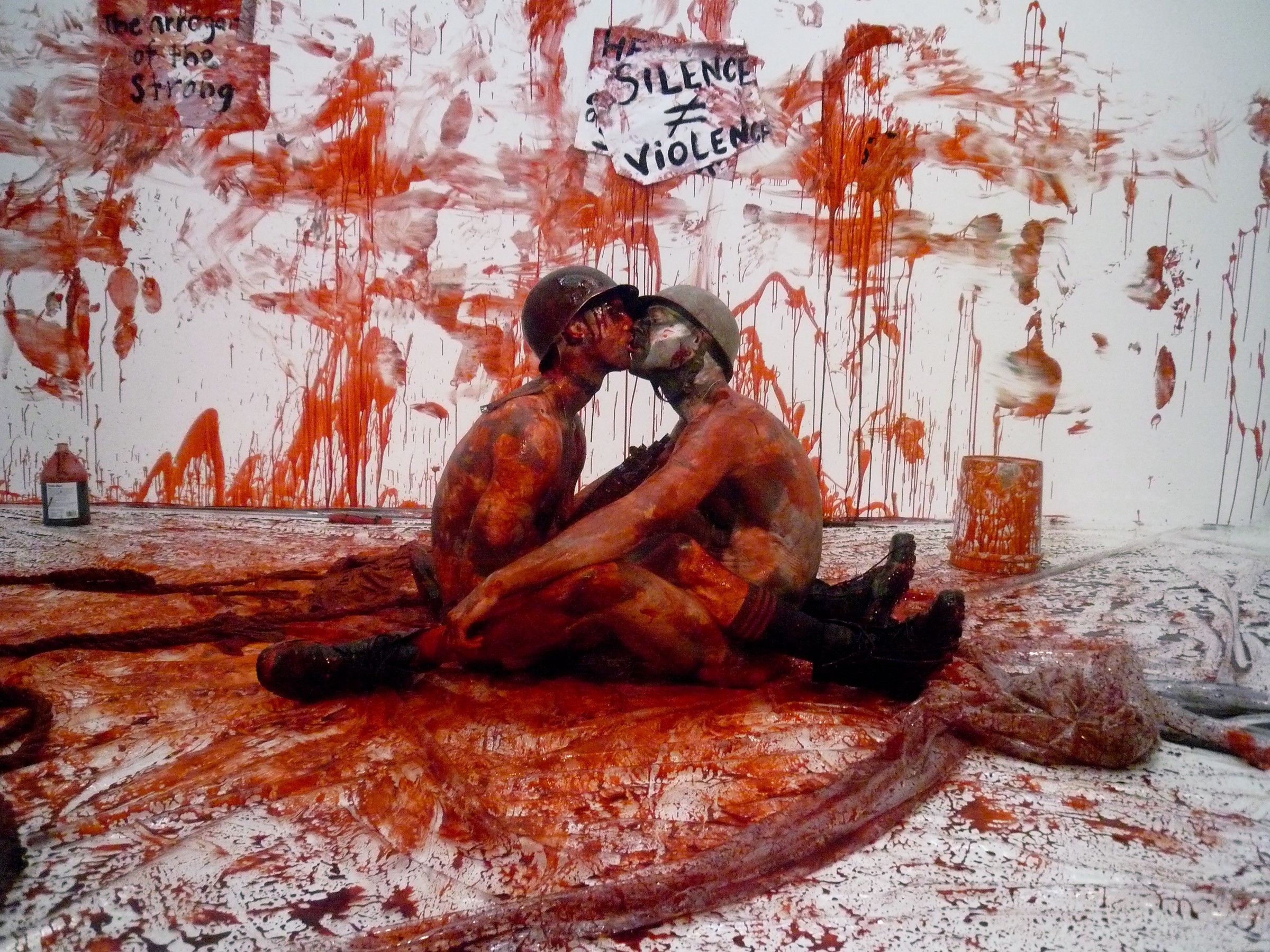
SM: What functions do porn and gore play in today’s society? And what place do they have in your more recent work?
BlaB: Gee, I don’t think I’ll ever get it out of my system! As the world gets crazier and crazier, potentially careening toward annihilation, there’s more need than ever to work out all the anxieties and hysteria and neurosis through art and creativity. Porn has always been a ludic space where people can work out their most outrageous and politically incorrect fantasies. As an unapologetic Freudian, I’ve always recognised the darkness and power of the sexual imagination. If it’s repressed, it becomes deadly and monstrous. Gore and splatter, which are essentially porn with spurting blood instead of ejaculations – the same penetration, the same orgiastic climax, the same jouissance – also serve a cathartic function. Especially when it’s analogue – the fake blood, the squishy, squirming organs. Digital effects tend to create a deadening effect, a flattening out, an embalming that asks for no participation from the audience, just passive consumption. Although I now mostly work in digital, I have a love/hate relationship with this zombie aesthetic, and struggle to bring it back to life.
SM: You’re regarded as a Canadian renegade auteur, agent provocateur, self-proclaimed contrarian and reluctant pornographer. After your MoMA retrospective in 2015, it became apparent that the mainstream culture was now capable of accepting even your radical oeuvre despite its gore, violence and controversy. Is shock value still as important to you as it was in your early queercore days?
BlaB: I will always support shock value for its own sake, after John Waters. As Richard Burton, the Angelo De La Morte, in Joseph Losey’s Boom, says (actually, Tennessee Williams): It’s the shock of each moment of still being alive.
SM: What was the most challenging project you’ve ever done? And what’s in your view your greatest artistic accomplishment?
BlaB: Saint-Narcisse, the movie I recently completed, was probably the most challenging in terms of the scale of the production and the use of special effects. But I had a decent budget so it was more controlled. There’s nothing quite like guerrilla, no-budget filmmaking, which is how most of my films have been made. It’s sheer adrenalin, lawlessness, and adventurism. As for my greatest artistic achievement, that has yet to be realised.
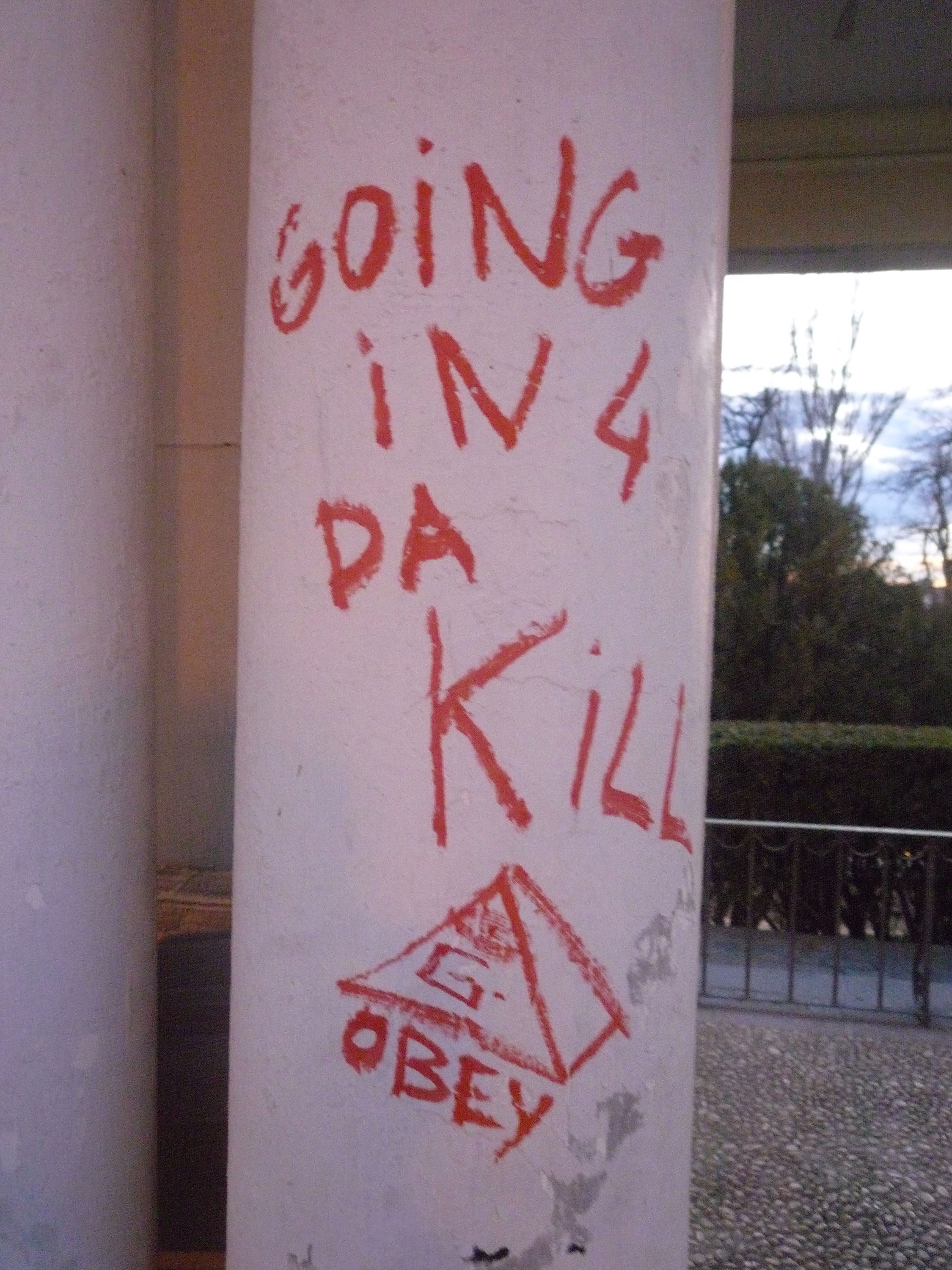
SM: Can you talk about specific dead people in the book?
BlaB: Yes. In fact, I would like to dedicate the book to these dead friends and colleagues. The book opens with a photo I took of the actor Brad Renfro and his grandmother, who was his guardian, now both gone. I only spent one very memorable (innocent!) weekend with Brad when he was 17 making a movie in Toronto with Bijou Phillips and Dominique Swain. We all went glow-in-the-dark bowling. I remember him playing guitar in his pyjamas when we were all in a taxi on our way from their hotel to my apartment. He was such a sweet, charming kid. I recall that he freaked out when he saw a framed photo collage/montage of River Phoenix hanging over my kitchen sink, which included a picture of River dead in his coffin that was published in The National Enquirer. When he saw it, he shuddered, as if a goose had walked over his grave. Eight years later, at the age of 25, he also died of a heroin overdose.
On page 11 appears a photo I took of Erik Rhodes, the late porn actor, on the set of my movie L.A. Zombie. I was distressed to hear that he died of steroid and recreational drug abuse two years later. I only worked with him the once, but he was so charming, intelligent, and easy-going, a gentle giant. The final entry on his blog is chilling and instructive, to wit:
What’s left to say… we all know this is where i’d end up… how long did you think i could go on playing happy go lucky… i mean, all the pills in the world can’t change the fact that i have lost my passion for almost everything in life and i just don’t care anymore… nothing excites me… i guess flirting with death is the only way to know your alive… i’m not alive… and if i’m dead when this is finally read, well just know i was dead when i wrote this… i wish i could have been a better brother, son, friend, lover… i just couldn’t. there was nothing anyone could do to help, so don’t bother wasting a second of your life saying “If only i…”
On pages 13, 16, and 21 appears my dear friend the artist and graffiti legend Dash Snow of the Irak crew of NYC. We became good friends after I met him through photographer Ryan McGinley, and I used to stay with him on visits to New York when he lived on Avenue C. Sadly, he died of a heroin overdose in 2009, an unfortunate member of the ‘27 Club’.
Genesis P. Orridge and Lady Jaye appear on page 14 in a photo I took on an exuberant night out at the legendary Squeezebox club in NYC. Both have subsequently died, dear Genesis earlier this year. On page 62 you can see my dear friend Will Munro in a Polaroid I took at my opening Polaroid Rage at Gallery 1313 in Toronto in 2006. The legendary Toronto artist and club promoter died of a brain tumour in 2010 at the tender age of 35. On page 42, the man with the fan in the kaftan is my lovely friend Michael Glass, who died far too young of a stroke. The last time I visited him was in a hospital in the LA neighbourhood of Watts when he was incapacitated and unable to speak, but his eyes brightened when I sat beside him. He was one of the smartest and most charming men I’ve ever known. And finally, the last page of the book is dedicated to Nico, the Warhol superstar and music legend, a photo of her headstone that I took on a pilgrimage to her grave in the Grunewald cemetery just outside of Berlin a number of years ago. A lifelong heroin addict, she had kicked the habit but died in Ibiza in 1988 at the age of 49 after falling from bicycle without wearing a helmet.
If anyone else featured in the book has died without me knowing about it, may they and the ones I’ve just mentioned all rest in peace.
Death Book by Bruce LaBruce is available to pre-order here.
